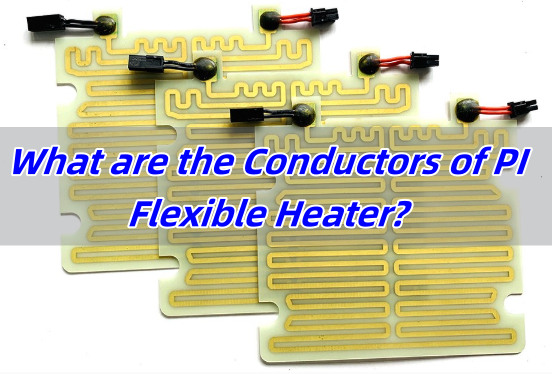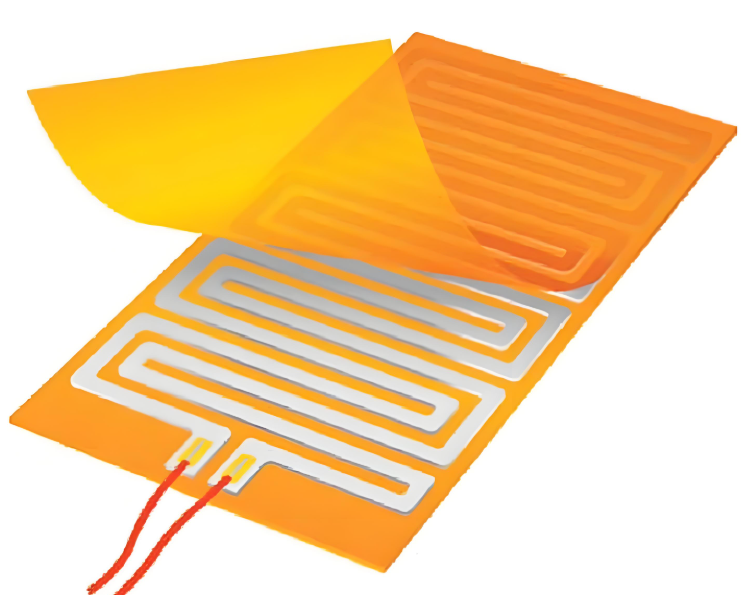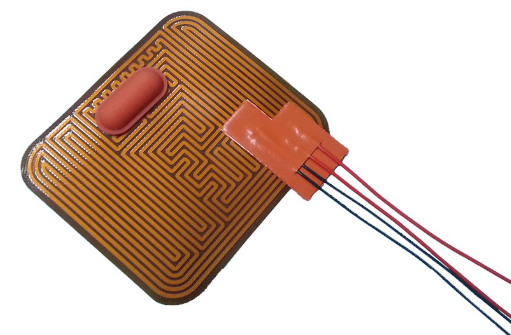A PI flexible heater (Polyimide flexible heater) is a thin, lightweight heating element known for its fast thermal response and reliability. It’s widely used in electronics, aerospace, battery heating, and medical devices. At the heart of this heater lies one critical component — the conductor.
The conductor determines how efficiently electricity is converted into heat. It also affects the heater’s durability, precision, and stability. Choosing the right conductor is essential to ensure consistent performance over time.
Let’s explore what conductors are used in PI flexible heaters, why they are needed, and how to choose the right one for your design.

The conductor of a PI flexible heater is the metallic circuit layer that generates heat when an electric current passes through it. It’s typically patterned into a serpentine or spiral shape to distribute heat evenly across the heater’s surface.
This circuit layer is sandwiched between two layers of polyimide (PI) film, which provides electrical insulation and high-temperature resistance. The conductor itself determines the electrical resistance, heat generation rate, and temperature uniformity of the heater.
Without the right conductor, even the best PI film cannot perform effectively, as the heating function depends entirely on the conductor’s properties.
A PI heater film by itself cannot generate heat — the polyimide only serves as a flexible and heat-resistant substrate. The conductor is the part that carries electrical current and transforms it into heat through resistance.
When voltage is applied, the current flows through the conductor pattern. Due to its resistive nature, it releases heat energy, which spreads through the PI film and then to the contact surface.
In short, the conductor acts as the active heating element, while the PI film acts as the protective and insulating layer. Together, they form a compact and efficient flexible heating system.
PI flexible heaters use a variety of metal conductors, each with distinct characteristics. The most common options include:
Each material offers unique resistance and thermal behavior, making it suitable for different applications or power requirements.

When selecting a conductor, both material width (roll width) and thickness are important to ensure the film matches production equipment and design parameters. Below are the standard width ranges used in PI flexible heater manufacturing:
These width options allow manufacturers to optimize layout utilization and minimize material waste during the etching process. Wider materials are ideal for larger heating zones, while narrower rolls are used for small or precision heaters.
Not exactly — although both PI heaters and PCBs (Printed Circuit Boards) can use copper as a conductor, the requirements and design methods are very different.
In PCBs, copper traces are designed to carry electrical signals or power with minimal resistance and almost no heat generation. The goal is conductivity and signal integrity.
In PI flexible heaters, however, the conductor is deliberately designed to produce heat through resistance. This means the thickness, width, and length of the copper circuit are calculated to achieve specific resistance values.
Also, PCB copper layers are often thicker (commonly 35μm or more), while PI heater copper foils can be as thin as 12μm or 18μm to fine-tune resistance. So, while the base material might be similar, their functional purpose and structural design differ significantly.
Selecting the proper conductor for a PI flexible heater involves balancing electrical, thermal, and mechanical factors. Below are key insights on when to use each material.
1. Copper (Cu)
Copper offers the highest conductivity among all conductor materials. It’s preferred for designs with fine line spacing below 0.25 mm, as only copper can maintain such precision during etching.
However, because of its low resistance, copper is not commonly used in standard PI heaters that require higher resistance for heat generation. It’s mainly chosen for miniaturized heaters or where high circuit density is needed.
2. Brass (CuZn)
Brass combines good electrical conductivity with strong oxidation resistance. It’s ideal for applications requiring medium resistance and better mechanical durability than pure copper.
At 50μm thickness, brass is often used for heaters exposed to mechanical stress or moisture. It provides a balance between conductivity, stability, and corrosion resistance.
3. 304 Stainless Steel
304 stainless steel offers consistent resistance and strong thermal endurance. It’s suitable for heaters operating at medium to high temperatures or in chemically harsh conditions.
Available in 30μm, 40μm, and 50μm thicknesses, stainless steel circuits deliver reliable heating with lower current requirements compared to copper. This material is widely used in automotive, laboratory, and aerospace heaters.
4. Iron-Chromium-Aluminum (FeCrAl)
FeCrAl is an excellent high-temperature conductor with high resistivity and strong oxidation resistance. It’s suitable for heaters requiring large power or operating at elevated temperatures.
It’s also a cost-effective option, though it’s slightly less flexible than copper or stainless steel. Common thicknesses are 30μm or 50μm, depending on the desired resistance.
5. Nickel-Copper Alloy (White Copper)
White copper combines nickel and copper, offering high resistivity, corrosion resistance, and uniform heating. It performs consistently in medical, aerospace, and industrial applications where reliability is critical.
With a 50μm thickness, white copper delivers a stable resistance and steady temperature output, even under fluctuating environmental conditions.

The target resistance and power output determine which conductor is suitable:
Manufacturers usually customize conductor selection after calculating the total resistance, power density, and heater size according to the customer’s specifications.
If your PI heater design involves line width and spacing below 0.25 mm, copper is mandatory. This is due to manufacturing constraints — other metals are harder to etch precisely at this scale. Copper provides the stability and uniformity required for fine-pattern heating circuits.
The conductor is the key to a PI flexible heater’s performance. Each material — from copper to FeCrAl — carries distinct advantages that influence resistance, heat uniformity, and longevity. The right selection depends on your power requirements, environmental conditions, and design accuracy.
At Danyu electronics, we design and manufacture custom PI flexible heaters with tailored conductor materials for every application. Our professional engineers evaluate your power and resistance targets to recommend the most suitable option.
We utilize precise etching and lamination technologies to produce consistent, high-quality heaters with excellent reliability. Whether you need heaters for medical, aerospace, or battery applications, our team ensures optimal material selection and performance.
📩 Contact us at sales@best-heaters.com for technical support or a personalized quote.
1. Why is copper not commonly used in PI flexible heaters?
Because of its low resistance, copper requires a higher current to reach the same heat output, which reduces efficiency for large heaters.
2. Can stainless steel handle high temperatures?
Yes, 304 stainless steel maintains stable resistance at medium to high temperatures, ideal for demanding heating applications.
3. Are PI heater conductors and PCB copper layers the same?
No. PI heater conductors are designed for resistance heating, while PCB copper layers are designed for signal or power transmission.
4. When should I choose FeCrAl?
Use FeCrAl when you need a high-resistance, cost-effective heater that can operate continuously under high temperature.
5. How can I select the right conductor material for my heater?
You can contact Danyu electronics’s engineering team at sales@best-heaters.com. We’ll recommend the best conductor based on your desired resistance, power, and working environment.
Simply drop your email or phone number in the contact form, and we'll promptly reply you shortly.